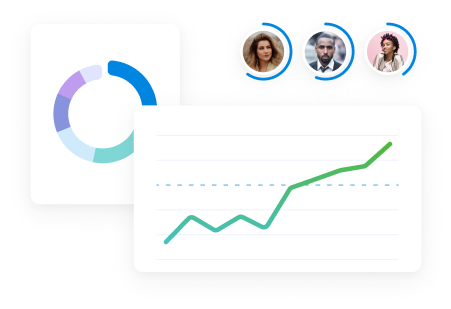Every new project starts with a project plan. As a project manager, you’ll set out the objectives, determine how and when these will be achieved, and identify the tasks your team must complete along the way. And of course, all those elements should be brought together in the right way, on budget, and on time. That’s a lot of balls to juggle before the project even starts.
Once the project does start, it is usually easy to keep an eye on how you use stock and supplies to deliver the project. But if time is money, and you can’t see in detail how much time has been spent, it can be difficult to make an accurate judgment of the project’s success. Of course, the client will be happy if their job is done well and on time. But has your business lined its pockets, or lost its shirt, in the process? This is where project scheduling comes in. The project schedule assigns tasks, responsibilities, resources and time.
What is a project schedule?
At its simplest, it could be a task list written on the back of an envelope. However, projects with any level of complexity – or organizations running multiple projects simultaneously – call for a more sophisticated approach to keeping progress under close control.
And of course, we’re not just talking wall charts (although they may also provide a physical reminder for office-based teams). Given today’s work-from-anywhere era, where team members may be logging in from various locations and at various times, collaborative work management (CWM) software is vital to keep everyone on track.
A good solution will include built-in project scheduling tools as standard. Scoro, for example, enables you to create tasks, assign resources, and monitor progress in real time via customizable dashboards. You can use these as an accessible, easy-to-interpret way of monitoring KPIs, team and project progress, financial performance and status; whatever your project or your business needs.
A good project schedule will break a project down into the following:
- The policies and processes that the team will be working to
- The stakeholders, as well as who has the authority to make changes to the plan and how those changes will be authorized and communicated
- Each task or step that needs to be completed
- The resources needed to complete these tasks – personnel, equipment, supplies, time, etc.
- When each task must be started and completed
- Which tasks are interdependent, and how
An accurate estimate of how long each task will take is essential to keep the plan on track. Allow too little time and the project will quickly lag behind schedule; allow too much and you risk having team members under-utilized as they wait for the earlier stages to be completed. Of course, making a realistic assessment of time becomes simpler if you can make use of accurate data from previous, similar projects and over time, this will become available to businesses that use a good project scheduling software in the first place.
Unlike traditional timesheets, which are notoriously inaccurate, Scoro’s project scheduling software enables team members to log their time automatically and accurately. And, because it is cloud-based and optimized for mobile devices, every member of the team can use it anywhere and at any time. Rigorous time-logging could enable you to start saving more than 25 hours per week of unproductive time per employee every week.
How do I create a project schedule?
Creating an initial project schedule in a platform like Scoro is easy.
If you have used our software to create your quotation, you can use the customizable project schedule templates to create tasks and subtasks from the quotation with a few clicks. You can also include key project metrics and determine the order of the tasks, identify those that depend on others for their success and plan resources and time allocations hour by hour.
You can create custom roles for team members and allocate time and budget accordingly. The project schedule becomes a ‘single source of truth’ for all stakeholders with shared calendars, deadline alerts, automatic notifications, real-time communications and live dashboards. Granular permission management, available on some Scoro plans if you need it, means you can even tailor individual access to project information according to a team member’s role in the tasks, their areas of specialism and whether they are internal or external contributors.
The resulting schedule provides a realistic project management timetable and shows the team:
- A clear pathway through the project
- Responsibilities/accountability
- What stakeholders can expect to see, and when
Although this is a good starting point, the schedule will need constant monitoring, reappraisal and updates throughout the life of the project. Issues will arise, priorities will change, and deadlines will move. In Scoro, you can see these changes happening in real time, and easily determine how and why delays are affecting the timeline and using up resources.
Sometimes these issues are caused by external factors, but spotting them early means you can deal with them fast. They might, of course, be internal issues – perhaps too much time is being spent on unproductive tasks. If so, many of these can be automated in Scoro. In fact, consultancy firms are doing just that in increasing numbers to improve profitability and to free employees up for work that adds value and gives them a greater sense of job satisfaction.
The benefits of effective time-tracking
Tracking time accurately enables you to measure the true cost of a project, and to avoid the pitfalls of over-servicing and under-charging. It gives you insights that you can use to make better use of employee capacity and to plan and cost future projects more efficiently. Importantly for an employee, this can mean they have more time and headspace to do their best work and avoid work-based stress or even burnout.
Choose the right project visualization for your team
How you create and share your project schedule could have a huge impact on its effectiveness. It must be accessible to all team members and easy to understand. Excel spreadsheets and MS Project are ubiquitous options, and they allow for creation of useful visualizations such as Gantt charts. However, both tools have their limitations when it comes to communication and collaborative working because they don’t support conversation tracking, file sharing or real-time updates.
Program evaluation and review technique (PERT) charts offer an impactful alternative way to view a project timeline. They use circles or rectangles to represent project milestones and link them by lines that represent tasks. However, while they might have done the job in the 1950s when the US Navy created them to support research and development programs, these days many businesses find that there are more straightforward visualizations that support easier interrogation of data and encourage team working.
For example, there are agile tools like Kanban and Scrum boards. In our view, though, it’s hard to beat a software product that creates visualizations that are easy for the whole team to interpret, as well as providing real-time, automatic status updates. Scoro does all this and removes the need for laborious, possibly inaccurate, manual copying over of information.
Scoro has also created the first real-time project schedule Gantt chart. It gives users a 360-degree view of project plans and updates automatically as team members log time, add and amend tasks. It means that project managers have a holistic view of progress and can make decisions faster, simply making any changes to allocate work or resources via a drag-and-drop interface to create a new ‘source of truth’ in moments.
A recent version update has made this even easier, because it now shows each individual’s current workload so PMs can schedule tasks based on current availability. And because Scoro is an evolving product with an active user community providing feedback and ideas, we continue to work on ways to make our visualizations more accessible and more useful for users of the software.
Work smarter, not harder
Your project’s success, and the customer’s satisfaction, depend on two things: your business’s expertise and the team’s commitment and motivation to get the job done well and add value. Your ability to give customers what they want and to do so profitably depends on having an effective project schedule that enables you to track and manage time rigorously in real time.
At Scoro, we have designed our award-winning end-to-end work management software to ensure businesses can ‘work smarter, not harder’. We’ve got many customer success stories that highlight the efficiency savings companies are achieving – often, as much as 20%.
We’ve already entered the hybrid working era, but does this newfound efficiency also mean the elusive goal of a four-day working week is becoming achievable? We believe it does, for businesses that want to go down that route.
Whatever your business goals, Scoro can help you keep your project both on schedule – and profitable. Find out how with our 14-day trial.




